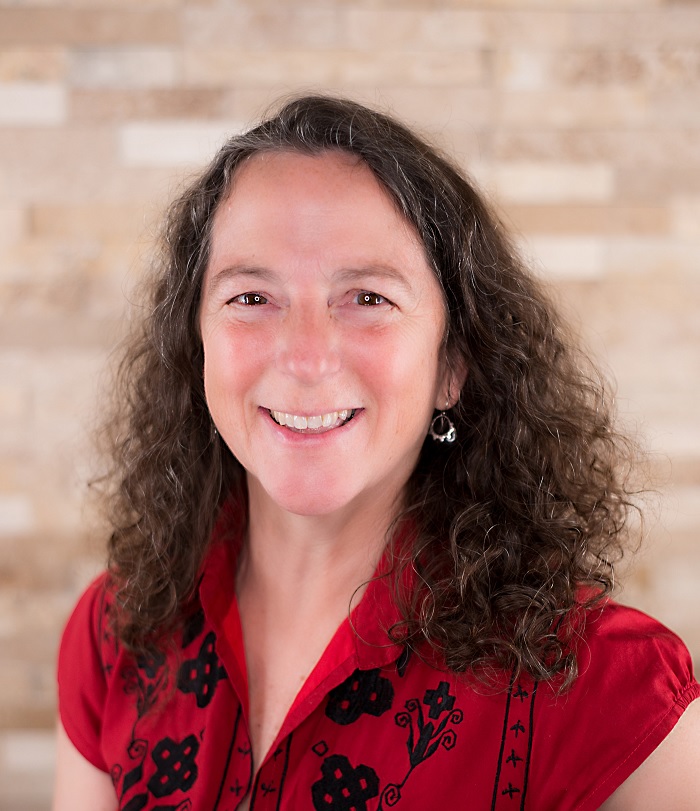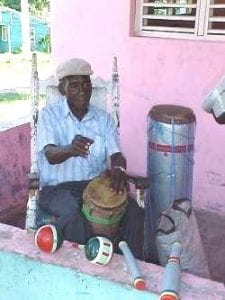
Heather Sloan, DMA, MLS, Media & Maps Assistant, Herman B Wells Library
This reflection on arts-related work involving technology and data is inspired by my two-decades-long project on Dominican folkloric percussion, undertaken with my Dominican music and folklore mentor Professor Edis Sánchez. As our project has evolved, we have explored numerous possibilities regarding the digitization, preservation, and management of our preliminary (analog) work. In addition, we have worked with data specialists to experiment with numerous technologies—including coding, web design, digital mapping and storytelling, and data management tools—to enhance our research and increase accessibility. Here, I offer a few observations in the hopes of launching a broader discussion on the roles technology and data can play in arts-related research.
Bringing Forward Old-School Data
Professor Edis Sánchez and I have been working together since the year 2000. In August of that year, I moved to the Dominican Republic (DR). Supported by a Fulbright grant, I worked with Sánchez to learn about the folkloric music genres found on the eastern side of Hispaniola, the island shared by Haiti and the DR. By the time I met him, Edis already had a significant collection of unique folkloric music recordings from all over the country, mostly on cassette tapes. During my stay, I recorded events on a Sony Mini-DV camera and transcribed music onto staff paper (as opposed to using notation software). As artists first, Professor Sánchez and I have backed up our original recordings but have struggled to keep up with best practices for the long-term sustainability of our music research data. It can be difficult to balance time spent capturing new recordings of at-risk music with ensuring the sustainable storage of that which has already been recorded.
The Joys and Sorrows of Zoom

Let’s face it: for those able to access it, the availability of video chat was key during the pandemic. With it, we could stay at least somewhat connected to one another. Professor Sánchez and I succeeded in conducting a number of valuable interviews while things were shut down in both countries. He would travel by car to a drum-maker’s house and set up a phone or computer with everyone masked and socially distanced. I would then contact them and record our interview on my computer. Our video chats captured important oral histories, and our participants’ vitality shone through. However, since a number of our community partners live in mountainous areas, video and audio quality were not guaranteed. We spent plenty of frustrating hours watching choppy screens and hearing garbled audio on both ends, and some of our footage is unusable. But in the end, we have some priceless interviews with Dominican drum-makers, aging artisans who had not shared their stories of craftsmanship, at least not outside their families and communities. As the older generations pass on and artisans’ customs change, this information is invaluable.

In the broader scheme of things, as restrictions lift, scholars have an opportunity to consider the role of online interaction moving forward. We have certainly seen the convenience inherent in the technology. But for myself, I will continue to be a strong advocate for in-person research as the default. Without the bonds and trust that Professor Sánchez and I had built with our collaborators in person over decades, the remote communication would have rested on a tenuous foundation, incapable of supporting the deep interactions we desired. And to me, shaking the calloused hand of a person who has spent their life making drums provides a fundamental piece of information about their lived experience, one that is impossible to discover online.
Juggling Skill Sets and Finding Experts
Present-day arts scholarship is complex and demanding in the best ways: scholars are often challenged to consider the arts holistically, taking into account tradition, cultural context, physical embodiment, socioeconomic concerns, and many other aspects of cultural production. Ideally, engagement with community partners is more equitable; the “invisible labor” of contributors such as graduate students and other collaborators is foregrounded and transparent; and research outcomes are more accessible to a wider audience (e.g., results are published in open-access repositories—perhaps in multiple languages if the project itself has multilingual content—and with alt-text and other features compatible with screen readers). Certainly, these goals remain aspirational at times, but with continued focus and commitment they are slowly becoming embedded features of scholarship.
As arts research evolves, so do the resultant research documents, as well as the technologies needed to support and maintain them. Along with a text publication, research might take other forms: supplemental audio-visual content, a virtual museum tour, a 3D-printed object, a digital map or virtual timeline, an online archive, a database, network analysis, and more. The collection, curation, presentation, and management of these types of data can greatly enhance one’s own scholarship and, if made available to others, inspire new research based on the same data. However, this work can also require skill sets—e.g., data collection and cleaning—that do not often appear in Arts curricula. On top of this, new pathways for sharing the typical “print” publication have emerged, and scholars can choose innovative methods for linking together all of their various scholarly efforts, boosting their visibility, and ensuring long-term accessibility.
As lifelong learners, both Edis and I are happy to acquire new skills, but ultimately there is a lot to know given the limited hours in a day. And not reinventing the wheel has its value as well, of course! Project management skills become essential, especially if seeking funding. It is also important to identify what role(s) the researchers can fill versus what is best done through relationships with research-support entities.
Sometimes We Need Help Thinking About the Right Questions to Ask
At Indiana University, we are very fortunate to have a robust research infrastructure, both in terms of technological and human resources, designed to support every stage of a project. Just as importantly, many of those at IU who facilitate research recognize that community collaborators and other research partners may not have such support. As such, they are also committed to keeping abreast of cost-effective and widely accessible methods for conducting, sharing, and managing research.
The Scholarly Communications Department forms part of that structure. I encourage you to visit our landing page to learn more. The introductory paragraphs give an overview of what we do, and from there you can navigate to the Related Pages and Services tabs for more details. Ever wondered what DOI stands for in a published article link? Or why you might want to create a personal ORCID ID? Maybe you are curious about IUScholarWorks, whether it can host video content (it can!), and how to do that? Or perhaps you’ve been tasked with developing a data management plan for a grant proposal.
As I said, the technological aspects of contemporary scholarship can quickly feel overwhelming. The Scholarly Communications Department staff can help you explore options and make decisions that suit your particular research trajectory and resources. As someone with an arts background, the world of data felt opaque and intimidating to me for a long time. I needed to engage with real humans adept at various types of data-wrangling before I could understand its usefulness. If that describes you even a little bit, I encourage you to take a chance and jump in. While you are at it, take a look at the many excellent services and opportunities provided by IU’s Institute for Digital Arts and Humanities (IDAH). If your work includes teaching and learning, check out the website of the Center for Innovative Teaching and Learning (CITL). Indiana University truly has an embarrassment of riches in terms of research support. It is well worth your time to explore them. HS
Do you have an anecdote, a question, or some pro-tips to share regarding arts-related research and technology? Please feel free to share in the comments. All observations—good, bad, or ugly—are welcome!
Leave a Reply